Q4:
AS & A Level Chemistry - 9701 Paper 4 2009 Summer Zone 1
Questions:
4/9

Topic: CH8 - REACTION KINETICS
Solution



PRACTISE
Similar Questions

LEARN
Concepts with Sparky

More Questions from this Topic
Theory
CH8 - REACTION KINETICS
(a) \( NH_3(g) \) reacts with \( HCl(g) \) to produce \( NH_4Cl(s) \), as shown.\[ NH_3(g) + HCl(g) \rightarrow NH_4Cl(s) \]Draw a diagram to show the...
2024
 Summer
Summer
 Summer
Summer
 2
2
Theory
CH8 - REACTION KINETICS
(a) A and B react together to give product AB.A + B → ABWhen the concentrations of A and B are both 0.0100 mol dm−3, the rate of formation of AB i...
2024
 Winter
Winter
 Winter
Winter
 3
3
Theory
CH8 - REACTION KINETICS
(a) The equation for reaction 1 is shown.reaction 1\qquad X \rightarrow 2YReaction 1 is first order with respect to the concentration of X. The half-l...
2024
 Winter
Winter
 Winter
Winter
 2
2
Theory
CH8 - REACTION KINETICS
(a) In aqueous solution, persulfate ions, $S_2O_8^{2-}$, react with iodide ions, as shown in reaction 1.reaction 1 $S_2O_8^{2-} + 2I^- \rightarrow 2SO...
2024
 Summer
Summer
 Summer
Summer
 2
2
Theory
CH8 - REACTION KINETICS
(a) In aqueous solution, persulfate ions, $\text{S}_{2}\text{O}_{8}^{2-}$, react with iodide ions, as shown in reaction 1.reaction 1 $\text{S}_{2}\tex...
2024
 Summer
Summer
 Summer
Summer
 2
2
Theory
CH8 - REACTION KINETICS
(a) A and B react together to give product AB.A + B → ABWhen the concentrations of A and B are both 0.0100 mol dm⁻³, the rate of formation of AB ...
2024
 Winter
Winter
 Winter
Winter
 3
3
Theory
CH8 - REACTION KINETICS
Potassium chlorate, $KClO_3$, is widely used as an oxidising agent and to make $O_2(g)$.(a) Define oxidising agent.......................................
2023
 Winter
Winter
 Winter
Winter
 2
2
Theory
CH8 - REACTION KINETICS
Fluorine reacts with chlorine dioxide, $ClO_2$, as shown.$$F_2(g) + 2ClO_2(g) \rightarrow 2FClO_2(g)$$The rate of the reaction is first order with res...
2023
 Winter
Winter
 Winter
Winter
 2
2
Theory
CH8 - REACTION KINETICS
Potassium chlorate, $KClO_3$, is widely used as an oxidising agent and to make $O_2(g)$.(a) Define oxidising agent.......................................
2023
 Winter
Winter
 Winter
Winter
 2
2
Theory
CH8 - REACTION KINETICS
Hypophosphorous acid is an inorganic acid.The conjugate base of hypophosphorous acid is $\text{H}_2\text{PO}_2^-$.(a) Give the formula of hypophosphor...
2023
 Spring
Spring
 Spring
Spring
 1
1
More Questions from year 2009
Theory
CH1 - ATOMS, MOLECULES & STOICHIOMETRY
Copper and titanium are each used with aluminium to make alloys which are light, strong and resistant to corrosion. Aluminium, $Al$, is in the third p...
2009
 Summer
Summer
 Summer
Summer
 2
2
Theory
CH10 - GROUP 2
Magnesium will react on heating with chlorine, or oxygen, or nitrogen to give the chloride, or oxide, or nitride respectively. Each of these compounds...
2009
 Summer
Summer
 Summer
Summer
 2
2
Theory
CH15 - HYDROCARBONS
Concern over the ever-increasing use of fossil fuels has led to many suggestions for alternative sources of energy. One of these, suggested by Profess...
2009
 Summer
Summer
 Summer
Summer
 2
2
Theory
CH22 - ANALYTICAL TECHNIQUES
(a) Complete the following reaction scheme which starts with ethanol.In each empty box, write the structural formula of the organic compound that woul...
2009
 Summer
Summer
 Summer
Summer
 1
1
Theory
CH22 - ANALYTICAL TECHNIQUES
(a) When F is formed in step I no other compound is produced. Suggest a structural formula for F, which contains one –OH group.(b) Compound G has tw...
2009
 Summer
Summer
 Summer
Summer
 2
2
Theory
CH1 - ATOMS, MOLECULES & STOICHIOMETRY
(a) Complete the electronic configuration of aluminium and of titanium, proton number 22.\[\begin{array}{|c|c|}
\hline
\text{Al} & 1s^2 \\
\hline
\tex...
2009
 Summer
Summer
 Summer
Summer
 2
2
Theory
CH10 - GROUP 2
(a) (i) Write an equation, with state symbols, for the second ionisation energy of calcium...............................................................
2009
 Summer
Summer
 Summer
Summer
 1
1
Theory
CH15 - HYDROCARBONS
Concern over the ever-increasing use of fossil fuels has led to many suggestions for alternative sources of energy. One of these, suggested by Profess...
2009
 Summer
Summer
 Summer
Summer
 2
2
Theory
CH22 - ANALYTICAL TECHNIQUES
(a) Complete the following reaction scheme which starts with propanone. In each empty box, write the structural formula of the organic compound that w...
2009
 Summer
Summer
 Summer
Summer
 2
2
Theory
CH22 - ANALYTICAL TECHNIQUES
Ethanol, CH$_3$CHO, can be converted into compound U by the following sequence.(a) When T is formed in step I, no other compound is produced.Suggest a...
2009
 Summer
Summer
 Summer
Summer
 2
2




 Share
Share




 Previous
Previous



